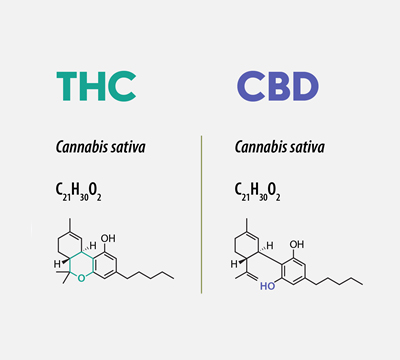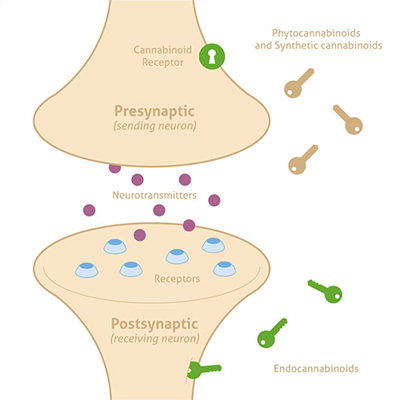Cannabis, a plant steeped in both controversy and curiosity, harbors within its leaves and flowers a rich reservoir of chemical compounds known as cannabinoids. These compounds, unique to the cannabis plant, play diverse roles in its biology and have garnered immense interest from researchers, enthusiasts, and entrepreneurs alike. In this article, we dive into the fascinating world of cannabinoids in cannabis, exploring their origins, diversity, and potential implications.
Origins and Evolution
Cannabinoids, as the name suggests, find their roots in the cannabis plant, scientifically known as Cannabis sativa. However, the story of cannabinoids extends beyond this single species, encompassing other members of the Cannabis genus, including Cannabis indica and Cannabis ruderalis. These plants have evolved over millennia, adapting to different climates and geographical regions, resulting in a wide array of cannabinoid profiles.
The evolutionary origins of cannabinoids can be traced back millions of years, with evidence suggesting that they emerged as chemical defense mechanisms against predators and pathogens. In this ecological context, cannabinoids serve to deter herbivores and pests while also exhibiting antimicrobial properties, thereby enhancing the plant’s survival and reproductive success.
Chemical Composition and Structure
 At the heart of cannabinoids’ intrigue lies their chemical composition and structure. These compounds belong to a class of molecules known as terpenophenolic compounds, characterized by their synthesis from terpenes and phenols. Structurally, cannabinoids consist of a unique arrangement of carbon, hydrogen, and oxygen atoms, with variations in their molecular architecture giving rise to distinct properties and effects.
At the heart of cannabinoids’ intrigue lies their chemical composition and structure. These compounds belong to a class of molecules known as terpenophenolic compounds, characterized by their synthesis from terpenes and phenols. Structurally, cannabinoids consist of a unique arrangement of carbon, hydrogen, and oxygen atoms, with variations in their molecular architecture giving rise to distinct properties and effects.
The primary cannabinoids found in cannabis include delta-9-tetrahydrocannabinol (THC) and cannabidiol (CBD), each with its own characteristic chemical structure. THC, the principal psychoactive component of cannabis, is responsible for the euphoric “high” commonly associated with cannabis consumption. In contrast, CBD is non-intoxicating and has garnered attention for its potential therapeutic effects.
Phytocannabinoids and Beyond
 Cannabinoids in cannabis can be broadly categorized into two main groups: phytocannabinoids and endocannabinoids. Phytocannabinoids, as the name suggests, are cannabinoids that are synthesized by the cannabis plant. In addition to THC and CBD, cannabis produces over a hundred other phytocannabinoids, each with its own unique properties and potential effects.
Cannabinoids in cannabis can be broadly categorized into two main groups: phytocannabinoids and endocannabinoids. Phytocannabinoids, as the name suggests, are cannabinoids that are synthesized by the cannabis plant. In addition to THC and CBD, cannabis produces over a hundred other phytocannabinoids, each with its own unique properties and potential effects.
Beyond phytocannabinoids, cannabis also contains other bioactive compounds, including terpenes, flavonoids, and alkaloids, which contribute to the plant’s overall chemical complexity. These compounds, while not cannabinoids in the strictest sense, interact synergistically with cannabinoids to produce the entourage effect, a phenomenon whereby the combined action of multiple cannabis constituents results in enhanced therapeutic effects.
Regulation and Biosynthesis
The biosynthesis of cannabinoids in cannabis is a complex and tightly regulated process, involving a series of enzymatic reactions that convert precursor molecules into active cannabinoids. This process occurs primarily in glandular trichomes, tiny hair-like structures that dot the surface of cannabis flowers and leaves. Within these trichomes, specialized cells known as glandular cells produce and secrete cannabinoids in response to environmental cues and developmental signals.
The regulation of cannabinoid biosynthesis is influenced by various factors, including genetics, environmental conditions, and cultivation practices. Genetic factors, such as the expression of key biosynthetic enzymes, play a crucial role in determining the cannabinoid profile of a given cannabis strain. Environmental factors, such as light intensity, temperature, and nutrient availability, also influence cannabinoid production, with optimal conditions often leading to higher cannabinoid yields.
Cannabinoids: Beyond Cannabis
While cannabinoids are most commonly associated with cannabis, they are not exclusive to this plant species. In recent years, researchers have identified cannabinoids in various other plant species, including liverworts, black pepper, and chocolate. These non-cannabis cannabinoids, although structurally distinct from those found in cannabis, share similar pharmacological properties and may offer unique therapeutic benefits.
Moreover, endocannabinoid-like compounds have been discovered in non-cannabis organisms, further expanding the scope of cannabinoid research. From sea squirts to elephants, evidence suggests that cannabinoids play diverse roles across different species, underscoring their evolutionary significance and ecological relevance.
Conclusion
In conclusion, cannabinoids in cannabis represent a fascinating convergence of chemistry, biology, and evolution. From their origins in the cannabis plant to their broader distribution in nature, cannabinoids continue to intrigue researchers and enthusiasts alike. By unraveling the complexities of cannabinoid biosynthesis, regulation, and function, scientists aim to deepen our understanding of these enigmatic compounds and their potential implications. As we journey further into the realm of cannabinoids, the possibilities for discovery are boundless, offering a tantalizing glimpse into nature’s chemical diversity.

